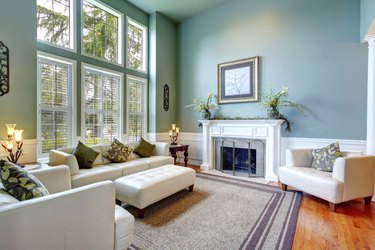
An area rug gives you design flexibility in the living room. Create a conversation area; define function in an open plan space; disguise a less-than-perfect floor; change the character and the dynamics of the room. Get the placement right, and the entire room comes into focus. Flub placement and your carefully decorated parlor will look off-balance. Take some time to locate the perfect size and shape area rug in the ideal place in your living room.
Drawing the Lines
Video of the Day
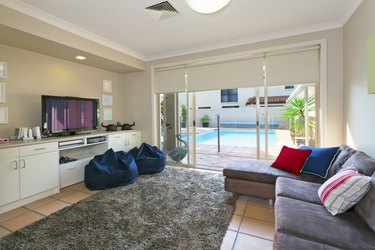
A rug is a flat geometric form that frames part of the floor. In a square room, in which you want a standard 18-inch border between the perimeter of the room and the baseboards, you'll need a square rug. If you have trouble locating a square rug, make your own with individual carpet squares that snap or otherwise connect together for custom coverage underfoot. An open space, a curved wall or a large room with a chandelier might look better with a round carpet that encircles the main seating -- sofas, daybeds and chairs. Round carpets should be large enough to cover most of the floor, or they risk looking like a garnish perched in the middle of the main course. You can get around this with a smaller round rug layered over a larger rectangular carpet or wall-to-wall carpet.
Video of the Day
Size Matters
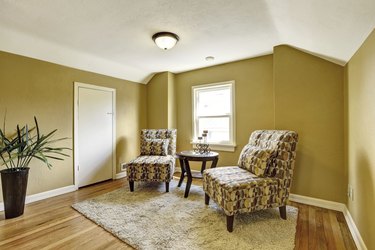
The wrong size carpet shifts the proportions of the living room out of whack. Too small -- and the rug floats like a shrunken island with the unmoored sofa and untethered chairs bobbing awkwardly somewhere near it. The entire room will seem smaller and disconnected. But, get a huge area rug that dwarfs the seating area and spills over into the open dining space or edges the entry, and you lose any definition in the room. All the furniture just sits on an expanse of carpet, and the traffic patterns are unclear and confusing. Either spring for a rug generous enough so all the seating fits on it with a bit of room to spare, or get a rug that will fit under the front legs of the sofa and fixed chairs so it visually connects them. Integrate a sectional by placing all sections, the coffee table and related seating on the rug, but leave cabinets and bookshelves completely off the rug.
More is Better
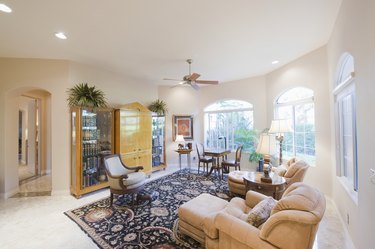
Cover a less-than-sightly floor with a large carpet and then layer a show-off smaller area rug over it. The old hardwood floor in the living room is stained and scuffed, but you're renting, or your decor budget won't stretch for a pricey refinishing. Muffle noise, add insulation from drafts and cosmetically enhance the shabby floor with a faded oriental that leaves a border of wood planks showing around the edges of the room. Under the coffee table or in front of a sofa or daybed, place a small tribal rug right over the oriental. It creates instant floor decor, is richly attractive, and draws attention to a part of the room that you want to highlight. When the floor covering is a sisal rug or sea-grass mat, adding a woven or knotted carpet under your favorite reading chair or in the conversation area creates a cozy ambiance for chilly weather.
Fire and Faux
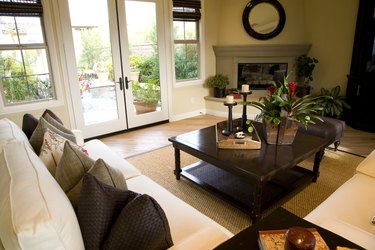
Exceptions to rug rules -- there are always exceptions -- allow for creative interpretations of rug placement that flatter the specifics of your space or your carpet. A focal-point fireplace with sofa and chairs arranged perpendicular to it balances a narrow antique or hand-loomed carpet as wide as the mantel and fireplace surround but not wide enough to accommodate even the front legs of the furniture. The rug should be long enough to extend past the furniture at both ends of the corridor between the sofa and chairs in front of the fire. A fake zebra rug or several fake animal skins can enclose an individual marquee piece of furniture like the setting for a jewel, creating a theatrical tableau for a star antique or a hand-carved stool or table picked up on your travels. Scatter several of the faux skin rugs around the room to highlight a reading nook, a chess table and chairs, or a prized chaise.